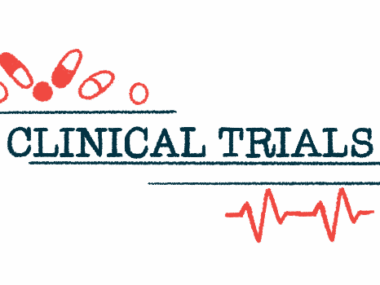Is gene therapy for Huntington’s the miracle we’ve been waiting for?
Recent trial results offer hope to our community
Written by |

When I received my wife’s recent text, which she wrote in all caps — something she’s morally opposed to — the room seemed to tilt.
I felt like dancing like a fool while laughing and crying at the same time. Jill had included a link with the following headline: “Huntington’s disease successfully treated for first time.”
As readers of this column may know, Jill is gene-positive for Huntington’s disease, as is our beloved daughter, Alexus, so we pay attention when any major news breaks regarding this devastating disease.
As I read the BBC story, my heart buckled under the weight of hope for the future and fear that this breakthrough might be too late to stop Jill’s progression.
I immediately called her.
“Is this real?”
The laugh on the other end told me all I needed to know, but she assured me that she spoke with her “sources” before hitting send.
The phrase “treated for the first time” felt like an earthquake. It struck not only our family, but everyone in the Huntington’s community who is living with the same symptoms and the same heaviness of this rare disease.
Because Jill’s father was also gene-positive, along with many relatives on his side of the family, Jill is very familiar with Huntington’s. I was asking her a bunch of questions about the article when it hit me: This new treatment involves 12 to 18 hours of “delicate brain surgery,” which sounds super dangerous.
I asked Jill, “How complex is this study, really?”
She paused, chuckled, and said, “Carlos, it’s not like it’s brain surgery.” She let the punchline hang just long enough for both of us to laugh — the kind of laughter that makes all those fears melt away.
To sum up the recent news: The experimental treatment, AMT-130, is a type of gene therapy. According to uniQure, the therapy’s developer, top-line data from two Phase 1/2 clinical trials showed that the therapy slowed Huntington’s progression by 75% after three years.
uniQure reported that the therapy was “generally well-tolerated with a manageable safety profile,” though researchers emphasize caveats about trial size, surgical complexity, and the need for full peer review. The company plans to meet with the U.S. Food and Drug Administration later this year and, if all goes well, seek regulatory approval of the therapy.
All this information is important, but we have to remember that press releases are built for clarity and uniformity; they inform, but they don’t capture the lived texture of trial days, caregiver logistics, or researchers poring over data at midnight.
What’s next?
When Jill and I discussed how we should approach writing about this news, we agreed that most everyone in the Huntington’s community is already aware of it. Many have already talked, texted, and posted about it on Facebook, X, and Instagram. Some are undoubtedly making T-shirts that feature the BBC headline.
This kind of hope deserves to be named — but we also can’t ignore potential concerns about study sample sizes, neurosurgical demands, cost, and equitable access.
To find out more, Jill and I reached out to uniQure to ask if we could pose questions to the people at the center of the trials: the participants and their families, the researchers, and all the team members who make the unglamorous parts work. We want to know more about the scheduling, travel, safety monitoring, and endless coordination that science quietly requires.
If we can bring our readers human context and practical details, it might help families ask their clinicians the right questions and plan emotionally and logistically for what could come next.
Will those conversations happen? Maybe, maybe not. Guardrails exist for good reasons. Regardless, it’s possible to hold two truths at once: 1) This is an extraordinary milestone many feared would remain out of reach. 2) It’s still early, with much to validate, refine, fund, and approve before the therapy could become available for the people who need it most.
For now, we can celebrate together — carefully and gratefully. In our house, that looks like Jill’s laughter cutting through the static of fear and a headline that made the floor feel unsteady for all the right reasons — plus a well-timed joke that reminded us hope and humor still belong in this crazy world of ours.
Note: Huntington’s Disease News is strictly a news and information website about the disease. It does not provide medical advice, diagnosis, or treatment. This content is not intended to be a substitute for professional medical advice, diagnosis, or treatment. Always seek the advice of your physician or other qualified health provider with any questions you may have regarding a medical condition. Never disregard professional medical advice or delay in seeking it because of something you have read on this website. The opinions expressed in this column are not those of Huntington’s Disease News or its parent company, Bionews, and are intended to spark discussion about issues pertaining to Huntington’s disease.







GRACIELA MESSYNGIER
nola, te leo siempre. cuanto optimismo, soy de las que piensan que en un lutiro muy lejano se encontrara la cura paa esta enlermedad, tento dos nijos con nuntitton y para ellos va a ser tarde